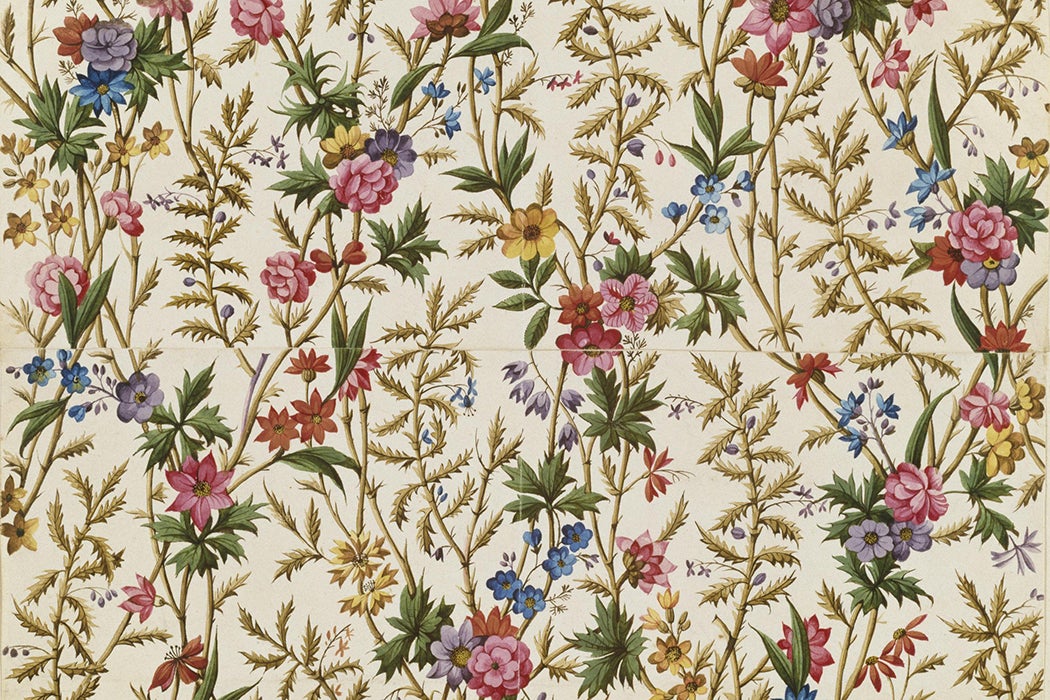Are you wearing seaweed? People have been for hundreds of years, without necessarily knowing it. Sixteenth-century Indian calico painters painted with seaweed. Seventeenth-century Japanese textile manufacturers sized with seaweed. Eighteenth-century Anglo-Irish designer William Kilburn printed calico with his drawings of seaweed. Even today you can wear clothes made of, you guessed it, seaweed.
In invisible ways, people have been wearing seaweed for a long time. Funori is a red seaweed cultivated on rocky Japanese coasts. Washed and soaked, it becomes a gummy solution. In the late 1500s Indian calico painters spread a thin layer of funori onto painted colors to keep them from flaking off of the fabric. The lighter colors—pastels and white—needed thicker coats. A second coat of funori was applied one month later, before the fabric was considered finished. By the seventeenth century, the Japanese were applying it to their own textiles to make them stronger, a process called sizing.
In eighteenth century-England, seaweed was used for sizing and also for print patterns. The Victoria and Albert Museum has William Kilburn’s eighteenth-century seaweed watercolors on display in London. They also have a dress block-printed with them. It is made of very fine quality cotton, and the seaweed motif is intricate. The multiple repairs show that the much-loved dress probably had several owners. Was seaweed really that popular as a pattern?
Kilburn was the interesting combination of an apprenticed calico printer and a botanical illustrator. He also married into a comfortable family of drapers. As a result, Kilburn produced for a discerning market—for the same people who saw in the sea a place for health, pleasure, and scientific experiment. The beautiful floral patterns of imported Indian printed cottons took on a new dimension with Kilburn. He saw how society’s fascination with flowers was being influenced by the new natural science. Plants of the sea were modernity and wildness in one. And Kilburn’s seaweed patterns were so appealing that they were the pinnacle of his 1790 collection. Even Queen Charlotte bought his seaweed fabric.
Weekly Newsletter
Today plant-printed fabrics are once again popular, but so are actual seaweed-derived fabrics. In the late 1940s, researchers experimented with turning seaweed fibers—alginate fibers—into rayon. The technique focused on plant cell walls. Today it’s possible to break down these cellulose fibers and weave them into cloth—often blended with other plant fibers. So some of the fabrics available to us are truly, woven strands of seaweed.







